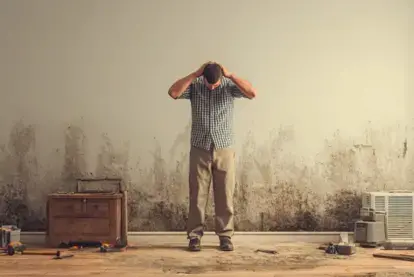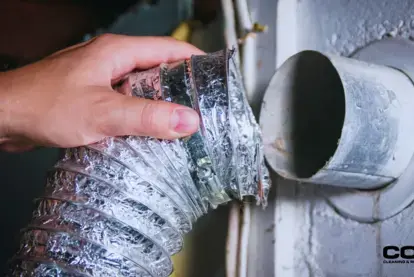
How to Improve Your Indoor Air Quality at Home
Contact COIT for a professional cleaning!
When you think about air pollution, outdoor smog or smoke might come to mind. But did you know the air inside your home can be two to five times more polluted than outdoor air?
Dust, allergens, and pollutants quietly accumulate over time, potentially impacting your family’s health. The good news? Improving indoor air quality (IAQ) isn’t complicated—and we’re here to guide you through it.
What Affects Indoor Air Quality?
The air inside your home is affected by a combination of pollutants, moisture levels, and ventilation. Common culprits include:
- Allergens like dust mites, pet dander, and pollen.
- Mold and mildew that thrive in damp spaces.
- Volatile organic compounds (VOCs) from cleaning products, furniture, and paint.
- Carbon monoxide from gas appliances or smoke.
- Household dust, often a mix of skin cells, dirt, and airborne particles.
Each of these factors can make breathing more difficult, especially for individuals with allergies, asthma, or other respiratory conditions. Understanding the sources of poor air quality is the first step to tackling them.
Keeping a Cleaner, Healthier Home
A clean home is a healthier home. Start by focusing on areas where dust and allergens collect.
For Floors
Vacuuming once or twice a week is really important. Use a vacuum with a HEPA filter to capture fine particles, and mop hard floors regularly to trap leftover dust.
For Surfaces
Skip dry dusting, which stirs particles into the air. Instead, use a damp microfiber cloth to trap dust and pay special attention to overlooked spots like blinds, ceiling fans, and baseboards.
Deep cleaning
Regular cleaning is great, but sometimes you need to go for an even deeper clean. Carpets, rugs, and upholstery can harbor dust mites and allergens, so scheduling a professional cleaning every 12 to 18 months makes sure these items stay fresh and allergen-free.
Managing Moisture to Prevent Mold
Humidity is another major factor in indoor air quality. Mold thrives in damp environments, and dust mites love moisture too. Aim to keep your home’s humidity between 30-50%.
Simple changes, like running your bathroom fan while showering or fixing a leaky pipe can make a big difference. In really damp areas, like basements, a dehumidifier can be a game changer.
Quick DIY Mold Prevention Tips
If you’re dealing with moisture-prone areas, these tips can help prevent mold before it starts:
- After every shower, dry the walls and floor with a squeegee or towel.
- Wash or replace bath mats and shower curtains regularly.
- Avoid overwatering houseplants, as excess water can increase indoor humidity.
Bring in Fresh Air Without Pollutants
Proper ventilation is key for improving your indoor air quality, but there’s a balance to strike. Opening your windows lets in fresh air, but it can also allow pollen and dust to enter—especially during allergy season.
One alternative is to use exhaust fans in kitchens and bathrooms to remove moisture and odors. You can also consider using a heat recovery ventilator (HRV) to circulate fresh air while keeping your home warm in the winter.
Reducing Harmful Chemicals at Home
You might be surprised at how many everyday products can release harmful chemicals. VOCs are found in paint, furniture, and cleaning products, and can irritate your lungs and even harm your long-term health.
To reduce your exposure, opt for low-VOC products whenever possible. This includes paints, finishes, and even household cleaners. Instead of synthetic air fresheners, try natural alternatives like essential oils or simply open a window to let stale air escape.
Technology in Cleaner Air
For the biggest impact on your indoor air quality, consider investing in technology designed to clean your air effectively.
Air purifiers
These are especially useful in bedrooms or living spaces where you spend most of your time and need cleaner air for better sleep and relaxation. Modern purifiers often come with additional features like activated carbon filters to remove odors and VOCs, making them a versatile choice for improving indoor air quality.
Smart air quality monitors
These devices measure pollutants in real time, alerting you when levels are too high so you can take immediate action. Many models also provide insights through smartphone apps, helping you track air quality trends and identify specific triggers, such as cooking fumes or outdoor pollen spikes.
UV lights for HVAC systems
Installing UV lights in your ductwork can kill mold, bacteria, and other microorganisms before they spread through your home for cleaner air circulation. These lights also help maintain the efficiency of your HVAC system by preventing microbial buildup on coils and other components, which reduces maintenance needs and energy consumption.
Why Professional Cleaning Matters
While regular cleaning is a great solution, some jobs need a professional touch.
Air duct cleaning is one of the most effective ways to improve indoor air quality. Your HVAC system circulates air throughout your home, and over time, dust, mold spores, and other contaminants can build up inside the ducts. This affects the air you breathe and also reduces the efficiency of your system.
Our trained technicians at COIT use advanced methods to thoroughly clean your air ducts, removing allergens and restoring your system’s efficiency. This service can even help lower your utility bills.
Room-by-Room Guide to Cleaner Air
Improving air quality means addressing specific challenges in each room. Here are a few of our tried and true tips:
- Bedroom: Dust mites love mattresses and pillows, so use allergen-proof covers, and wash bedding weekly in hot water.
- Living Room: Opt for washable throw rugs and regularly vacuum your upholstery. Skip heavy drapes in favor of blinds or washable curtains.
- Kitchen: Ventilate while you’re cooking to reduce odors and moisture and properly store food to avoid pests.
- Bathroom: Keep surfaces dry, run the exhaust fan after your showers, and clean the grout to prevent mold.
When to Call in the Experts
Sometimes, no matter how much you clean, the air in your home still feels stale. If you notice persistent odors, fast-dusting surfaces, or worsening allergy symptoms, it might be time to call a professional.
Air duct cleaning should be conducted every two to three years for a healthier home. Having a clean, properly functioning heating, ventilating and air conditioning (HVAC) system is vital to maintaining a clean, healthy and comfortable living environment.
A newly cleaned air duct system also runs more efficiently than a dirty one, and could result in lower utility bills. COIT’s air duct cleaning technicians go through extensive in-house training, which is designed according to the standards imposed by the National Air Duct Cleaners Association (NADCA - of which we are a member). Our training program includes classroom study, field training, and testing.
COIT’s air duct cleaners check for dust, dirt, pollen, animal dander and other airborne contaminants that can be pulled into your HVAC system every time the furnace or air conditioner runs. Over time, these contaminants can build up inside your ductwork, making the system a breeding ground for mold spores, bacteria, fungus, mildew and other microbes, which are then re-circulated through your home, potentially impacting the health and comfort of your family.
People who suffer from allergies, asthma or other respiratory ailments, especially children and the elderly, are vulnerable to the effects of indoor air pollution. Once you call COIT, we will schedule a visit by one of our trained technicians, who will examine your air duct system, talk to you about your cleaning needs, and offer a free, written, in-home estimate with no obligation.
Final Thoughts
Your home should be a place where you feel safe and comfortable—and the air you breathe plays a big role in that. By taking steps to reduce pollutants, manage moisture, and maintain clean surfaces, you can create a healthier living environment for your family.
At COIT, we specialize in creating healthier homes through services like air duct cleaning, carpet and upholstery cleaning, and even tile and grout care. Each service is backed by our 100% satisfaction guarantee.
If you’re ready for a deeper clean, contact us today to make your home fresher, healthier, and more inviting.



